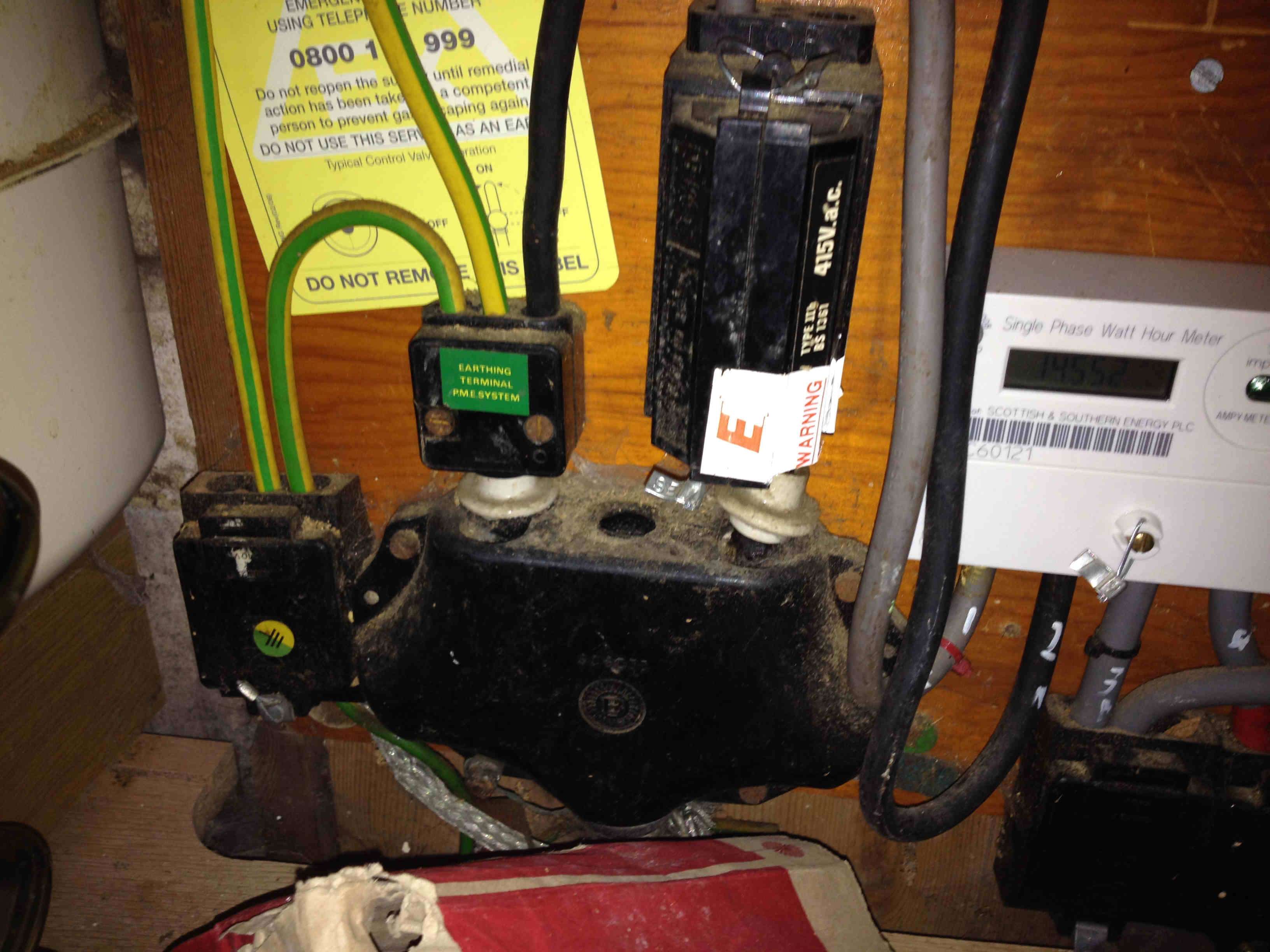- Joined
- 4 Nov 2015
- Messages
- 38
- Reaction score
- 0
- Country

Hello to everyone,
A house i am checking has a large amount of Electro Magnetic Fields around the main cables feeding from the electric cupboard.
Naturally i expected it was just normal, but when i checked with a micro Tesla meter it was 5.0 uT right next to the wires, even when we had no current flowing in the system, with all the breakers & main breaker off. Also, the water main copper pipe in our house disappears in to the ground is also showing s higher value uT reading near the ground.
When we have less than 3000w flowing in the whole house we are in the area of 14.00uT.
Typically the field should drop off quickly, with the middle of the room being 0.04uT, but the field is seems to climb above 0.04 two foot from the cables than it should for such little power usage.
So i safely disconnected the main earth bond from the electricity distribution PE, and the fields dropped to 0.01uT as expected, and afterwards only increased as power usage increased. There was a second PE Earth bonding going to a unused Economy7 breaker box, so i know we were not completely disconnected from the PE.
Could the neutral return resistance to the substation be higher than the house earth, or their is a neutral fault even? Resulting in current flowing from our neighbours installation through our earth and back to the substation?
I checked for obvious short between Earth and Neutral, but nothing obvious 0.1R on my standard meter. I just got my MIT320 meter so my resistance readings will be more accurate so im going to perform a full check.
ElectricsRanger
A house i am checking has a large amount of Electro Magnetic Fields around the main cables feeding from the electric cupboard.
Naturally i expected it was just normal, but when i checked with a micro Tesla meter it was 5.0 uT right next to the wires, even when we had no current flowing in the system, with all the breakers & main breaker off. Also, the water main copper pipe in our house disappears in to the ground is also showing s higher value uT reading near the ground.
When we have less than 3000w flowing in the whole house we are in the area of 14.00uT.
Typically the field should drop off quickly, with the middle of the room being 0.04uT, but the field is seems to climb above 0.04 two foot from the cables than it should for such little power usage.
So i safely disconnected the main earth bond from the electricity distribution PE, and the fields dropped to 0.01uT as expected, and afterwards only increased as power usage increased. There was a second PE Earth bonding going to a unused Economy7 breaker box, so i know we were not completely disconnected from the PE.
Could the neutral return resistance to the substation be higher than the house earth, or their is a neutral fault even? Resulting in current flowing from our neighbours installation through our earth and back to the substation?
I checked for obvious short between Earth and Neutral, but nothing obvious 0.1R on my standard meter. I just got my MIT320 meter so my resistance readings will be more accurate so im going to perform a full check.
ElectricsRanger


